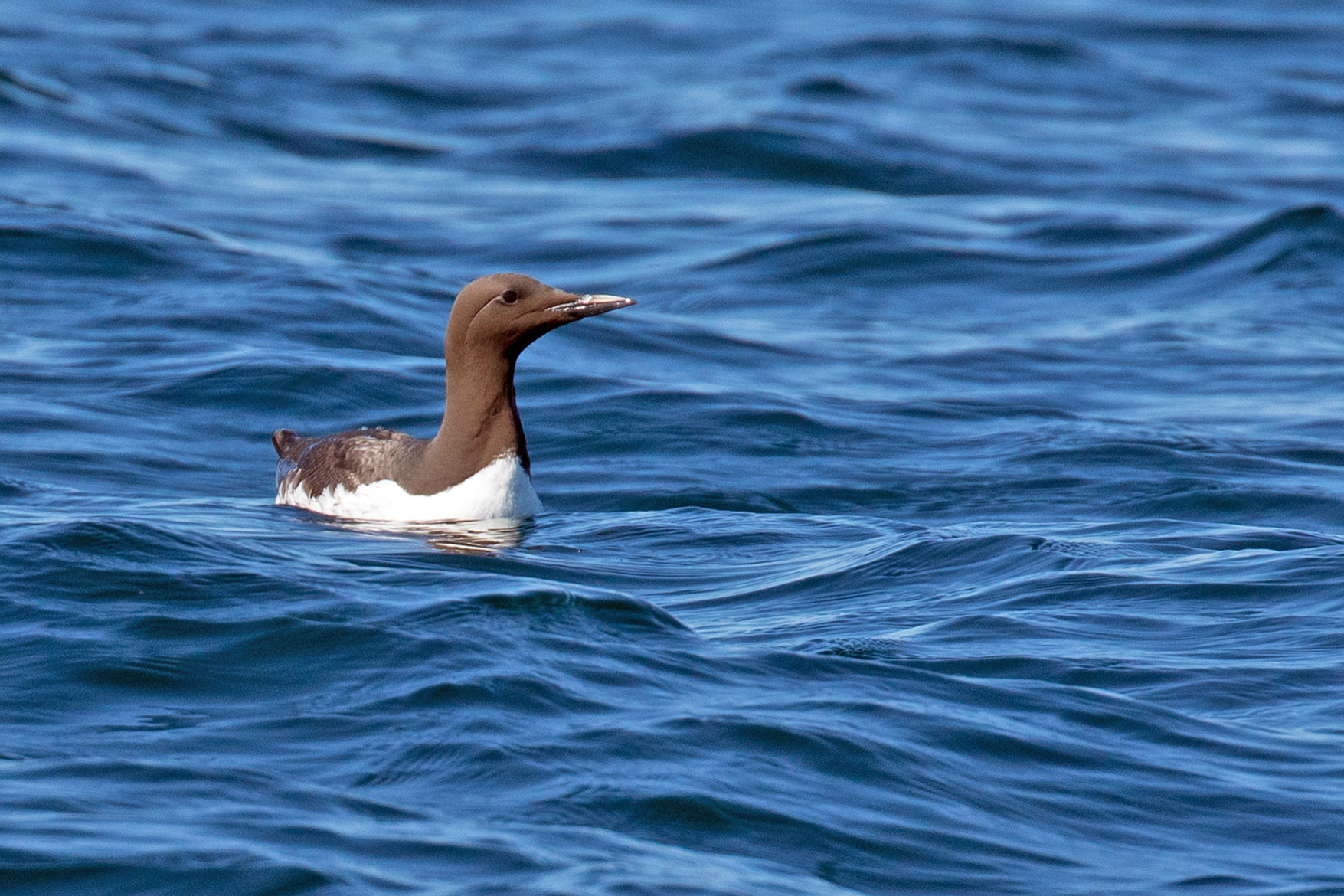Bird of the Month: Common Murre
By Hugh Jennings
PC: Mick Thompson (Common Murre)
Scientific Name: Uria aalge
Length 17 in
Wingspan 26 in
AOU Band code COMU
The Common Murre (COMU) is about 17” long with a wingspan of 26”. The genus name Uria (YOU-rih-ah) is from the Greek ourein, to dive. The species name aalge (AHL-geh) is the Scandinavian word for bird. The common name (MER) is of obscure European origin and may be related to marrot, local English dialect, for an auk, guillemot, or puffin.
In summer, the COMU has a dark head, neck, and upperparts with white underparts. The bill is slender, pointed and all-black. In winter, the cheek and throat are white with a dark streak through the cheek. In summer, it is found on coastal cliffs. They are widespread on the Pacific coast from Alaska to California. They are more local in the east, being found mainly in Eastern Canada. Winters are spent at sea.
This large member of the auk family sits upright on sea cliffs, looking like a northern version of a penguin. It swims and dives expertly but its flight seems labored.
The common Murre has the most densely packed nesting colonies of any bird species of its size. The nests may be so close together that incubating adults actually touch other adults on both sides. Breeding begins at 4-5 years of age.
Displays by pairs include pointing bill skyward, bowing deeply, clashing open bills together and preening each other’s feathers. One (usually the female) may return to the nest from the sea with a fish and present it ceremonially to the mate.
The nest site is on a cliff ledge or on a flat stony surface near the water. No nest is built, the one egg is laid on bare rock. Incubation by both sexes is 28-37 days. Young are fed by both parents, and they leave the nest at 15-25 days before they can fully fly, gliding down from nesting cliffs to the sea. Young are probably capable of flight at about 50-70 days.
The COMU feed on a variety of fish by diving underwater from the surface. They usually dive 10-25 ft. down, but have been caught in traps at 300 ft. Their voice is a very low, purring murrrr , like their name: also croaks and growls on breeding grounds. The Common Murre is still abundant, but they have declined in many areas. They are vulnerable to effects of pollution and a frequent victim of oil spills.


